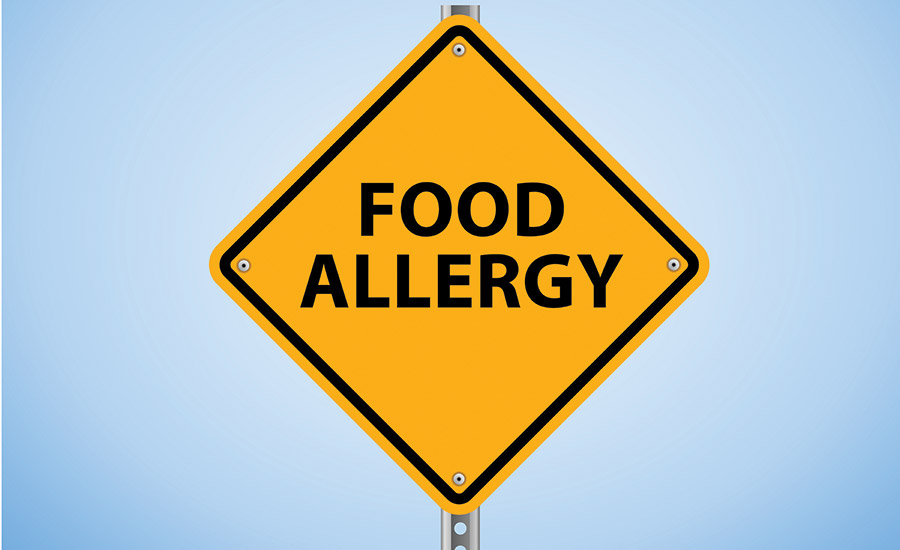According to FDA, more than 160 foods can cause allergic reactions in people with food allergies. In the U.S., federal regulatory bodies identify eight most-common allergenic foods, which FDA says account for 90 percent of allergic reactions related to food. These are:
- Milk
- Eggs
- Fish
- Crustacean shellfish
- Tree nuts
- Peanuts
- Wheat
- Soybeans
These eight foods, and any ingredient that contains protein derived from one or more of them, are designated as “major food allergens” by the Food Allergen Labeling and Consumer Protection Act of 2004 and require labeling.
In Europe, as regulated by the European Food Safety Authority (EFSA), this list grows to 14, adding:
- Celery/celeriac
- Mustard
- Sesame
- Sulfur dioxide/sulfites
- Lupin
- Mollusks
EU authorities also expand the wheat allergen to include “cereals containing gluten,” adding grains like spelt, Khorasan wheat, rye, barley and oats.
For sulfur dioxide and/or sulfites, labeling is required when added and at a level above 10 mg/kg in the finished product, primarily of concern in connection to the ingredients’ use as a preservative in dried fruit.
Eggs and egg products often go into a number of further-processed items, including egg wash, marshmallows, meringue and marzipan, all common in baking. Egg-derived lecithin is also often included on egg allergy lists, but this is only a potential issue if any residual protein exists within the lecithin ingredient. Check with your supplier to determine any required declarations.
In the U.S., it’s important that the industry not confuse a wheat allergy with gluten intolerance or celiac disease. Food allergies involve an overreaction of the immune system to a specific food protein. Upon ingesting the food protein, it can trigger an allergic reaction causing symptoms that can range from mild, like rashes, hives, itching or swelling, to severe, like having difficulty breathing, wheezing and loss of consciousness. A food allergy can be fatal.
Similarly, lactose intolerance should not be grouped in with a milk allergy. Someone who is lactose-intolerant simply cannot break down lactose, preventing digestion and causing discomfort, with symptoms that can include nausea, cramps, gas, bloating and diarrhea. Lactose intolerance it is not life-threatening.
Baked snack and bakery environments bring special considerations to light when discussing food allergens. According to IDDBA, it’s important to remember that multiple bakery staples like butter, cream, whey, sour cream, whipped cream, yogurt, cheese and buttermilk are included under the milk allergen. While consumer-facing food allergy resources often list caramel color or flavor as a potential allergen, this is rarely valid, as milk is not a common source for these ingredients. Check with your supplier to determine the carbohydrate used to derive the caramel color or flavor used in your application.
For eggs, remember to group egg washes within allergen declarations on the label. Also, edible cake decorations can sometimes include egg ingredients, as can some egg substitutes/extenders.
Wheat allergy includes all known varieties, types and/or hybrids like durum, einkorn, emmer/farro, farina, graham, Kamut, matzo, semolina, spelt and triticale. Wheat allergy guidance also includes derivatives like hydrolyzed wheat protein, wheat protein isolate, wheat germ and malt. Although wheat germ oil is often included on wheat allergy lists, when refined, it should not contain any residual wheat protein. Nevertheless, resources often advice consumers with a wheat allergy to avoid wheat germ oil.
When analyzing ingredient selection for voluntary gluten-free labeling initiatives, keep in mind that while many ingredients derived from wheat may not be completely gluten-free, they very well might be below the 20 ppm threshold set by FDA for gluten-free labeling purposes. Check with ingredient suppliers for complete analytical details on any wheat-derived ingredients.
As with egg-derived lecithin, any lecithin derived from soy must be analyzed for residual protein levels. Also, some types of guar gum can contain a percentage of soy protein, which would require label declaration.
Resources
FDA, “Food Allergens,” www.fda.gov/food/ingredientspackaginglabeling/foodallergens/default.htm
FDA, “Food Allergen Labeling and Consumer Protection Act of 2004,” www.fda.gov/Food/GuidanceRegulation/GuidanceDocumentsRegulatoryInformation/Allergens/ucm106187.htm
Food Standards Agency, “Allergy and Intolerance,” https://www.food.gov.uk/science/allergy-intolerance
IDDBA, “Food Allergens in the Bakery,” www.iddba.org/training-materials/pdfs/job-guides-food-allergens-bakery
Food Allergy Research & Education, “Resources for Food Manufacturers,” www.foodallergy.org/resources/food-manufacturers




